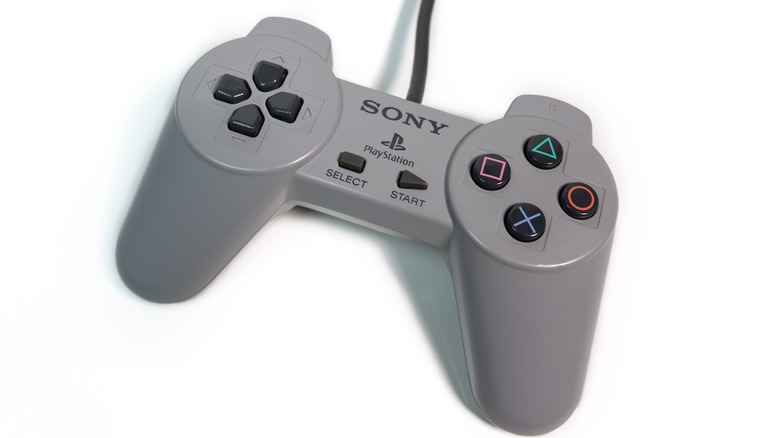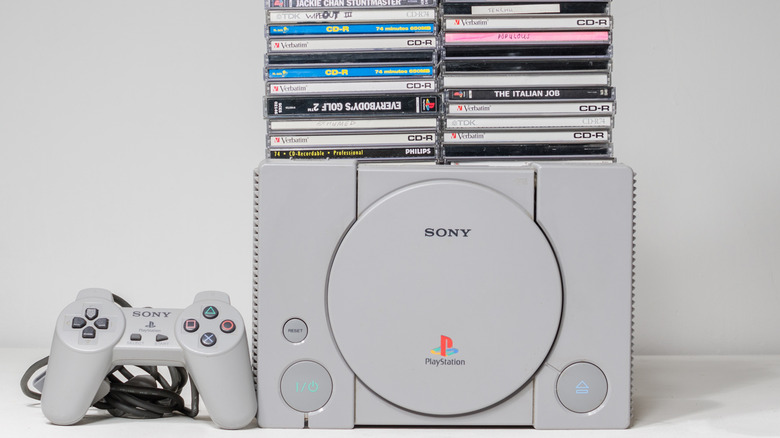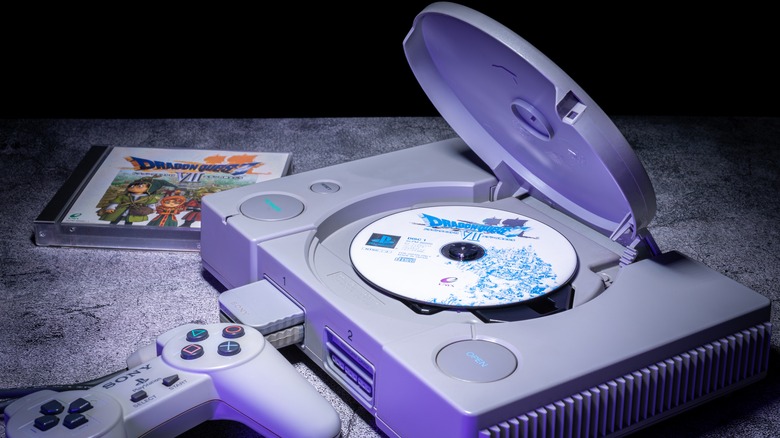How Takafumi Fujisawa And His Teams Created The Classic Startup Sounds For Playstation
Consoles from the Sega Master System to the most modern iterations of the PlayStation and Xbox have all featured some kind of sound on launch, but as time has gone on, these sounds have become a bit samey. Both the PlayStation 5 and Xbox Series X|S startup sounds are pretty inoffensive — airy, and like the final beats of a movie trailer — but back in the day, these launch sounds were wildly more experimental. Great games — and consoles — can be ruined by terrible audio. However, for the most part, older console startup sounds enhance the experience.
The Gamecube's launch sound, for example, is a bouncy and hectic melody capped by the sudden crescendo of the logo falling into place — that is, if the user didn't enable a secret alternate version. The original Xbox startup sound was like an electric beating pulse while the Dreamcast's was more natural, like a drop of water falling into a full glass. Yet few sounds conjure memories of an age of gaming gone by more than the original PlayStation startup sound.
YouTuber NakeyJakey described it well when he said that the original PlayStation's startup sound is like "going through a portal into the cyber realm," and that it encapsulates "everything the PS1 has to offer." It was a revolutionary console, one that accomplished things others could only dream about, and one that set standards for the future of gaming. In an exclusive interview for the PlayStation blog in 2019, Takafumi Fujisawa, the composer of the console's iconic launch sound, revealed never-before-known details on how it came to be.
The sound was designed before the PlayStation team was official — and there's an alternate version
Speaking with Jeff Cork, senior editor at Game Informer, Takafumi Fujisawa began retelling the story of the PlayStation 1 startup sound with anecdotes from around its conceptualization. Fujisawa said he was a part of the PlayStation project before the team was made official, and he worked on the startup sound while other developers worked on the first PlayStation 1 prototype.
"I thought of the structure, selected the tones, and gathered the instruments in two weeks, and the studio work was done essentially in two days." He said that the only real limitation he faced was the size of the ROM, as he barely received any instruction from Sony other than to "maintain the core image of PlayStation" on all types of TV speakers (via PlayStation).
Fujisawa also described an ultimately flawed alternate version of the PlayStation 1 startup sound he made, one with a voice — his own — that whispers "PlayStation" over the animation. The team decided to go with the simpler, narrator-free version because the alternate gave "the impression... that the game console speaks to you." Fujisawa didn't say specifically why the alternate was scrapped, but perhaps a whispering voice made players feel uncomfortable or gave an uncanny sense of not being alone.
Whatever the case, we ended up with the iconic PlayStation 1 startup sound we all know. Part of what made the PS1 launch sound so iconic may be thanks to its inspirations: The sense of excitement of the cinema, and the emotions that can only be created through an orchestra.
Fujisawa looked to orchestra and cinema to create a rich, layered experience
In the interview, Jeff Cork compares the opening tones of the PS1 startup sound to the opening of "Thus Spoke Zarathustra," composed by Richard Strauss — which is better known nowadays for its association with "2001: A Space Odyssey" and as a cinematic trope. "I structured the sound so that the listener starts off stable and then feels a little bit off," Fujisawa said. He then clarified that "by starting with an equal temperament and taking it to an original, pure intonation harmony," he can create a strong impression in the listener, all with the power of music theory (per PlayStation).
Fujisawa said that he wanted to start the music relatively quietly, to not startle users upon turning on the console, and follow it with "original and also welcoming" sounds. The slow build-up of the synthy, bassy tone instills that sense of security, then the tone shifts, surprising the listener as the second set of strings kicks in, the twinkling tones come to the forefront, and, finally, the logo appears on screen with a swish, jingle, and fade-out.
"I kept thinking from the start that I wanted the sound image to be something exciting, like that feeling when you walk into a cinema," Fujisawa said. "I really wanted to ... reinforce that something fun is going to happen." But instilling a sense of excitement in players wasn't Fujisawa's only goal in designing the PS1 startup sound — it also had to help developers fix problems with the console as it boots up.
The sound was purposefully designed to help devs troubleshoot problems
An aspect of game development that isn't put into practice quite much anymore is the use of a console's boot-up screen to troubleshoot problems as it launches. For example, the Gamecube's melody would end with a noticeably different tone if a CD couldn't be read while the GameBoy Advance's final glistening sound effect wouldn't play if it didn't have a cartridge to load.
The PlayStation also changed its startup noise based on the status of the console — all to help developers identify problems that can arise during the boot-up sequence. The last, twinkling notes that play as the PlayStation logo appears are one such signifier, as is the swooshing sound effect that plays just before.
According to Fujisawa, the twinkling notes were a kind of final confirmation that everything booted up normally, and the console is ready to go. If the console is having problems launching, this chime-like sound wouldn't play, and developers could take it from there to figure out what went wrong. Just before this final confirmation, the swooshing sound is designed to go into a loop specifically if a disc can't be read (per PlayStation).
Fujisawa worked on the wildly different PlayStation 2 and 3 startup sounds, too
The original PlayStation 1 startup sound brings gamers straight back to the '90s with its rich synth strings, semi-HD-but-still-fuzzy chimes, and deep, rumbling bassy tones. It was far from Fujisawa's only job, though, as he also worked on the two follow-up PlayStation consoles' startup sounds and eventually continued his time in the gaming industry in a more managerial role.
The PlayStation 2's startup sound was more layered than before, with a kind of airy-yet-sophisticated synth burst that leads into the gentle tones of the menu. Fujisawa said that the sound team at PlayStation had grown significantly since the first PlayStation console was released, but they honed in on two options. Later, the 4th chord that made the original startup so impactful returned "to express simple strength and the image of landing somewhere from space."
Fujisawa started to lean more into his role as a development manager by the time of the PlayStation 3, so the sound was actually handled by his junior members of staff. The PlayStation 3 startup sound is a sharp departure from the other two consoles — instead of a synthy, digital intro, the PlayStation 3's startup noise was more sophisticated and orchestral. "I think that the concept is great that the sound features the orchestra tuning up to express that something is starting," Fujisawa said (per PlayStation).
"Sound design has a never-ending charm of exploring the meaning of homage, superiority, and context," Fujisawa said. "In that sense, my experience with the startup sound has been extremely valuable and exciting."



